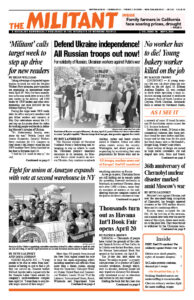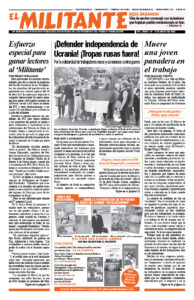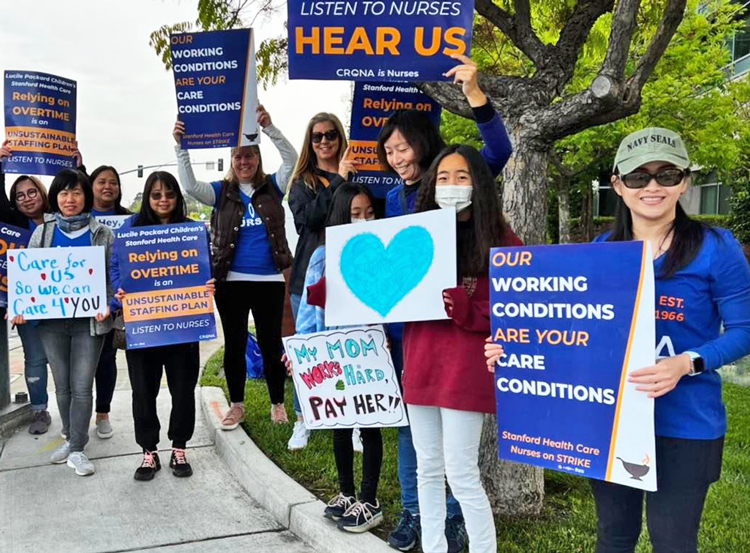PALO ALTO, Calif. — Thousands of nurses walked off the job April 25 and began picketing outside both Stanford Hospital and Lucile Packard Children’s Hospital here, in a strike over understaffing, work stress, wages, retiree health benefits and access to mental-health counseling.
Dressed in blue union T-shirts, strikers waved signs saying, “Stanford Health Care — Can you hear us!” and “If the nurses are outside, something’s wrong inside.”
“It’s a moral issue,” cardiology nurse Sarah Morgan told the Militant. “Understaffing means we cannot give the care patients need.” She said that despite the patient/nurse ratios mandated in California law, Stanford Health Care management always finds ways around the requirements.
One of the ways is overtime. “Nurses are working 10 to 14 days in a row, in 12-hour shifts — and sometimes 16 hours a day. That’s not sustainable,” cardiac intensive-care nurse Kimberley Reed told the San Francisco Chronicle.
About 93% of the members of the union, Committee for Recognition of Nursing Achievement, voted to strike. Its contracts ran out March 31. The union’s last strike at these hospitals was in 2000 and lasted 51 days.
Nurses on the line said few of them can afford to live near the hospitals, which are located in upscale Palo Alto. Lauren Lorber, who has worked in the emergency room for several years, said she drives down from San Francisco. Stanford’s current wage offer is far below inflation, she said.
Intensive-care nurse Brittaney West wrote in an April 25 Chronicle opinion piece that 41% of nurses at the two Stanford hospitals are considering leaving within the next few years. Rather than recruit more nurses and improve working conditions, she said, Stanford is using “travel nurses” to fill gaps. With more than half in her unit being these temporary nurses, she and her colleagues are expected to orient them while simultaneously caring for patients.
Adding insult to injury, starting May 1 Stanford Health Care says it will withhold health benefits for the striking nurses. A petition urging management to reverse this decision has been signed by nearly 30,000 people.


